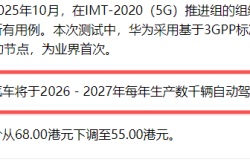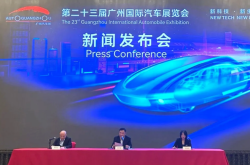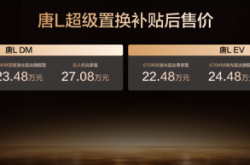Can Cao Cao Travel Go Global When It Struggles Domestically? Pursuing Robotaxi Amidst Massive Losses
![]() 11/21 2025
11/21 2025
![]() 549
549
Cao Cao Travel has taken another step in its overseas expansion. Recently, it inked a memorandum of understanding with the Abu Dhabi Investment Office in the United Arab Emirates. The two parties aim to jointly drive the pilot deployment of autonomous vehicles in Abu Dhabi and advance green transportation solutions, centering on electric vehicles and battery-swapping models.
According to the cooperation plan, Cao Cao Travel will bring its highly efficient battery-swapping network and operational system, which have undergone extensive validation in the Chinese market, to Abu Dhabi. These will be integrated into the local green energy ecosystem. In return, the Abu Dhabi Investment Office will help Cao Cao Travel set up a regional office and operations center, serving as a pivotal strategic base for its expansion into the Middle East market.
This collaboration marks a significant leap forward in the overseas business of Cao Cao Travel's Robotaxi service. It officially launches its integrated solution of 'vehicle manufacturing + autonomous driving technology + mobility services,' modeled after Tesla, onto the global stage. Starting from the Middle East, Cao Cao Travel has set its sights on global operations.
Mired in Persistent Losses
Before Robotaxi can achieve global commercialization, whether Cao Cao Travel can break free from its current cycle of losses will be crucial for its survival.
Financial data reveals that from 2022 to 2024, Cao Cao Travel's revenue reached RMB 7.631 billion, RMB 10.668 billion, and RMB 14.657 billion, respectively. Despite this substantial revenue growth, profitability remains elusive, with cumulative losses surpassing RMB 5.2 billion over the past three years. In the first half of 2025, its adjusted net loss still stood at RMB 330 million. Meanwhile, the company's debt levels remain high, with the debt ratio soaring from 119.5% in 2022 to 177% in 2024.
The root cause of Cao Cao Travel's 'revenue growth but profit decline' lies in the industry's fundamental dynamics and its own business strategies.
On one hand, the competitive landscape in the ride-hailing industry, characterized by 'one dominant player and multiple strong contenders,' remains unshaken. Cao Cao Travel has to rely on continuous subsidies and promotional activities to retain driver and user loyalty. This 'subsidy-driven growth' model has become the primary reason for its persistent losses.
Profit margins in the ride-hailing industry are already razor-thin, and Cao Cao Travel's large-scale subsidies have further eroded its profitability. Financial reports indicate that from 2022 to 2024, its gross profit margins were -4.4%, 5.8%, and 8.1%, respectively. During the same period, its sales costs reached RMB 7.97 billion, RMB 10.052 billion, and RMB 13.47 billion, accounting for 104.4%, 94.2%, and 91.9% of its revenue, respectively.
On the other hand, aggregation platforms have proven to be a double-edged sword. Cao Cao Travel's increasing reliance on these platforms has brought in traffic but also eaten into its already slim profits.
The positive aspect is that after shifting its growth focus to aggregation platforms, Cao Cao Travel's order volume has skyrocketed. From 2022 to 2024, the proportion of its order transaction value from aggregation platforms rose from 49.9% to 85.4%, while the proportion of order volume increased from 51.4% to 85.7%. However, the concerning aspect is that its sales and marketing expenses surged from RMB 322 million in 2022 to RMB 1.046 billion in 2024, more than tripling in three years.
Facing severe profitability pressures, Cao Cao Travel is pinning its hopes on the global commercialization of Robotaxi to reach the break-even point. However, for a company still struggling to stay afloat, whether it can hold on until Robotaxi becomes truly profitable remains a big question mark.
Breaking Through with Robotaxi Is No Small Feat
Amid widespread losses in the ride-hailing industry, Cao Cao Travel is betting its future on the emerging Robotaxi sector. As a strategically invested company by Geely Holding Group, Cao Cao Travel has had a unique 'vehicle manufacturing + mobility services' foundation since its inception, providing it with a differentiated advantage in deploying Robotaxi.
On one hand, unlike pure technology companies or mobility platforms, Cao Cao Travel has established a trinity strategic model of 'customized vehicles + autonomous driving + mobility platform,' making it one of the few domestic companies with full-stack capabilities in Robotaxi.
For instance, Cao Cao Travel's deep control over the vehicle ecosystem provides a natural foundation for data feedback, algorithm iteration, and operational optimization. According to data from the first half of 2025, it operates over 37,000 customized vehicles across 31 cities, forming the largest customized ride-hailing fleet in China.
On the other hand, Geely's ecological support offers multiple safeguards for Cao Cao Travel. Financially, despite facing substantial losses and debt pressures, Geely's backing provides a necessary financial buffer for Cao Cao Travel's Robotaxi R&D. In terms of technological synergy, Geely's expertise in vehicle manufacturing complements Cao Cao Travel's operational data, accelerating the iteration and optimization of autonomous driving technology.
In February 2025, Cao Cao Travel launched its autonomous driving platform, 'Cao Cao Zhixing,' and initiated Robotaxi pilot programs in Hangzhou and Suzhou. That same year, its pioneering 'Green Intelligent Mobility Island' is set to debut in Hangzhou, aiming to provide systematic support for the large-scale operation of Robotaxi. These advancements are a testament to the deep collaboration between Cao Cao Travel and Geely's ecosystem.
However, the competition in the Robotaxi sector is far more intense than anticipated. As a latecomer, Cao Cao Travel faces stiff challenges from tech giants, startups, and traditional automakers, making breakthroughs a daunting task.
Apollo Go, as a pioneer, has deployed over 1,000 autonomous vehicles across 15 cities globally, serving over 11 million trips. Its consecutive strategic partnerships with Uber in July and Lyft in August this year have enabled the deployment of thousands of autonomous vehicles in multiple global markets, achieving the first large-scale commercialization of autonomous vehicles. This global布局 (layout) and partner network create a formidable competitive barrier.
Pony.ai has shown remarkable commercialization acceleration. Collaborating with traditional automakers such as Toyota, BAIC Group, and GAC Group, it is advancing the mass production of its seventh-generation Robotaxi, with cumulative public road testing mileage exceeding 3.5 million kilometers. More notably, the total cost of the autonomous driving suite for Pony.ai's seventh-generation Robotaxi has dropped by 70% compared to the previous generation, laying an economic foundation for large-scale operations.
It's worth noting that the global autonomous vehicle market is not dominated solely by Chinese players.
Waymo has already launched large-scale operations in multiple major U.S. cities, with 1,500 vehicles providing over 250,000 paid trips weekly. Tesla, since initiating trial operations in Austin, Texas, in June 2025, has been actively expanding its operational scope. The technological accumulation and operational experience of these international players cannot be overlooked.
Robotaxi is a typical industry driven by economies of scale. Pioneers leverage the data advantages accumulated through large-scale operations to form a positive cycle: more data leads to better algorithms, better algorithms enhance operational efficiency, and higher efficiency supports further expansion. Cao Cao Travel needs to find a breakthrough point within this cycle.
A Race Against the Clock
It's crucial to recognize that whether in terms of technological progress, infrastructure development, or policy implementation, the large-scale commercialization of Robotaxi is still some way off. For Cao Cao Travel, which urgently needs to turn a profit, this future-defining race is both an opportunity and a race against the clock.
First, current Robotaxi technology is at a critical juncture of transitioning from 'usable' to 'user-friendly,' with the long-tail effects of autonomous driving not yet fully resolved. Existing perception and decision-making systems remain vulnerable when facing edge scenarios such as extreme weather, complex road conditions, and emergencies.
Cao Cao Travel must achieve not only stable operations in routine scenarios but also ensure safety and reliability in 99.99% of all situations.
Second, China's vehicle-infrastructure cooperation system is still in its infancy and has not yet entered the operational and management phase. Cao Cao Travel's planned 'Green Intelligent Mobility Island' in Hangzhou represents a positive attempt, but a single-city pilot cannot support nationwide commercialization.
Furthermore, the uncertainty of policy implementation is another critical constraint. Currently, global regulatory attitudes toward Robotaxi remain cautious. While China has opened select testing areas in cities like Beijing, Shanghai, and Guangzhou, fully driverless commercial operation permits without safety operators are still scarce.
Cao Cao Travel must navigate not only technological validation but also complex regulatory approvals, including vehicle certification, operational permits, accident liability determination, data security compliance, and other regulatory requirements. In this process, efficient communication with government authorities and demonstrating capabilities will be crucial variables determining the pace of commercialization.
The future of Robotaxi is bright, but the path ahead is fraught with challenges. For Cao Cao Travel, the greatest risk is not the technical difficulty itself but missing the strategic window of opportunity before the industry takes off. As competitors accelerate their global expansion, the time for Cao Cao Travel to experiment and refine its approach is rapidly running out.






